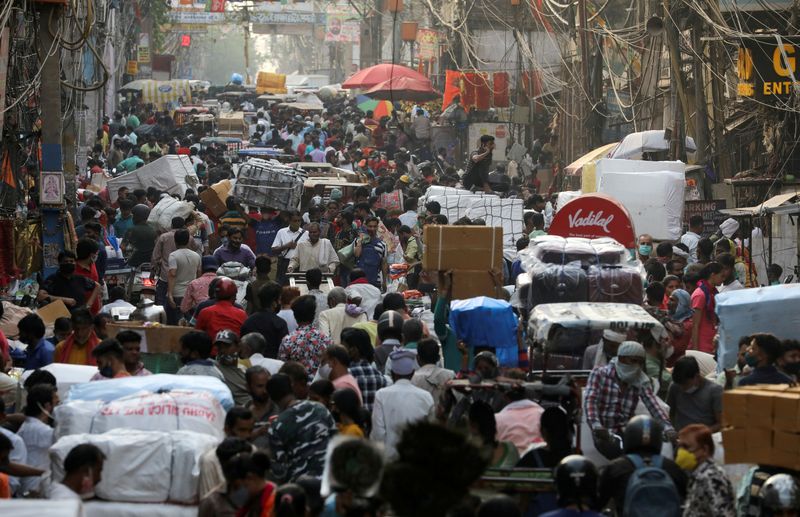(Changes one of the bylines; no changes to text of story)
By Aftab Ahmed and Manoj Kumar
NEW DELHI (Reuters) - India posted annual economic growth of 6.3% in its July-September quarter, less than half the 13.5% growth in the previous three months as distortions caused by COVID-19 lockdowns faded in Asia's third-largest economy.
Gross domestic product growth for the full fiscal year, which ends on March 31, is likely to be 6.8-7%, the government's chief economic advisor V. Anantha Nageswaran said after the release.
That would be broadly in line with pre-COVID rates before pandemic lockdowns triggered wild fluctuations.
The rate for the September quarter, the second of India's 2022/23 financial year, was just above the 6.2% forecast by economists in a Reuters poll.
Economists warned, however, that growth momentum may ease in the December quarter due to higher interest rates and slowing exports.
"Even as domestic growth drivers on services side continue to remain robust, weakening global demand amid tightening financial conditions remains the key risk for growth outlook for India," said Garima Kapoor, economist at Elara Capital.
Graphic: India's growth story India's growth story https://graphics.reuters.com/INDIA-ECONOMY/GDP/akpezbgaxvr/chart.png
The Reserve Bank of India has raised rates by 190 basis points since May this year and is seen hiking again when its monetary policy committee meets in early December.
Slowing global growth has also started to hurt exports, which fell 17% over a year ago in October.
The Indian central bank sees GDP growth for the 12 months to March 31, 2023, at 7% but economists see risk of a downside to these forecasts.
Finance minister Nirmala Sitharaman, speaking at the Reuters NEXT conference ahead of the release, said she was looking forward to "a very good ... growing Indian economy this year and the next," fueled in part by capital expenditure.
Graphic: Key sectors adding to India's growth https://graphics.reuters.com/INDIA-ECONOMY/GDP/akveqzrnovr/chart_eikon.jpg
Graphic: Key components of expenditure https://graphics.reuters.com/INDIA-ECONOMY/GDP/akpeqzrxopr/chart.png
Government capital spending increased more than 40% during the September quarter as the federal government stepped up expenditure on infrastructure from roads to railways.
Aided by pent-up demand, particularly for services, private consumption grew 9.7% compared to a year ago, while capital formation, an indictor of investment, increased 10% annually.
"Services on the supply side and investments in the demand side would continue to be the main drivers of growth," said Sujan Hazra, chief economist at Anand Rathi.
Among key sectors, agricultural output rose 4.6% while manufacturing fell 4.3% and the employment-generating construction sector saw a 6.6% annual increase in activity.
"In case of manufacturing it has been clearly affected by low growth for the small business sector and fall in profits that has affected value added for the organized sector," said Madan Sabnavis, chief economist at Bank of Baroda.
(This story has been refiled to change one of the bylines)
